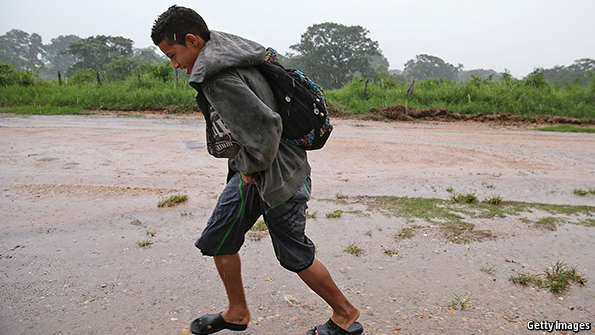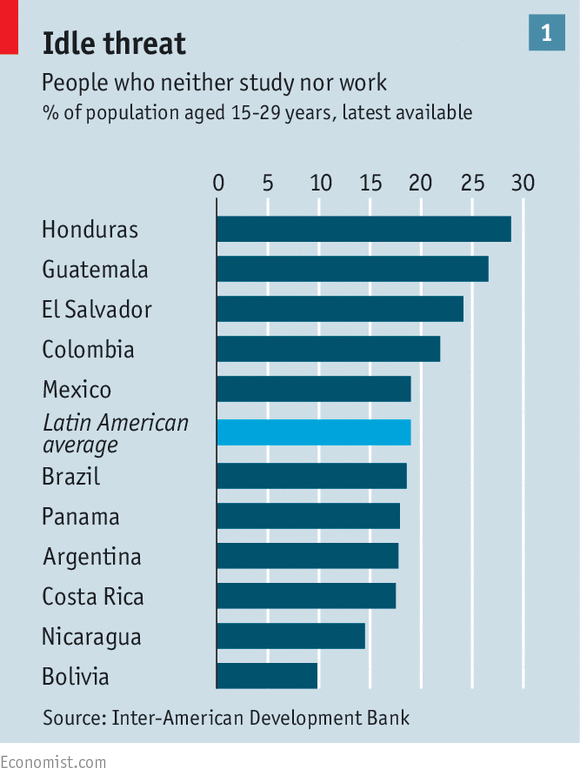EDUARDO ORTIZ RAMÍREZ
Los numerosos conflictos políticos y
económicos que han estado presentes durante toda la administración bolivariana han
aumentado y se han agudizado a partir de las complicaciones políticas y económicas
desde 2012. No es estrictamente asociable esto último, a la desaparición física
del presidente Hugo Chávez, pues en tiempos de sus gestiones se desarrollaron profusos
conflictos, incluido el del intento de golpe de Estado de 2002. Pasó a coincidir,
más bien, con el aumento de la problematización económica y social, que tuvo su
punto mayor en las crisis de 2014 y en su continuación en base a permanencia de
presos políticos o aumento de acciones de corte represivo. Las mismas
negociaciones económicas que se dieron a partir de 2014 con el sector privado,
cayeron en frustración y en un muy bajo nivel de acercamiento para llegar a
acuerdos.
Los procesos de ajuste y
estabilización, llevados a cabo en la estructuración de la política económica
antes de la administración bolivariana –en un periodo de cerca de 20 años-, no implicaron
correctivos estructurales y de permanencia para la economía y la sociedad venezolana.
Parte de la explicación de esto radica en la profundización del fenómeno del
rentismo, pues la mayoría de las administraciones de tal período–igual que la
bolivariana-, hicieron el planteamiento de disminuir la dependencia petrolera y,
contrariamente, la aumentaron. Si en el peso del producto petrolero y no
petrolero, así como en sus tasas de crecimiento, esto no es siempre
evidenciable, en los mecanismos de difusión, encadenamientos o en la creación
de economías externas y dinámica de la inversión privada, si es perceptible
como el petróleo fue captando cada vez más espacios de la economía venezolana.
A la llegada del Presidente Chávez, las exportaciones no tradicionales, por
ejemplo, apartando momentos de los inicios de los años noventa nunca alcanzaron
saltos estructurales contundentes y estables. Tampoco sucede durante la
administración bolivariana. Contrariamente durante esta, caen en un estancamiento
estructural y definitivamente alterador de cualquier posibilidad de impulso cómodo.
La ausencia de una definida política de desarrollo de las exportaciones no
tradicionales, ha sido la otra cara del rentismo.
Debe destacarse la influencia que tienen
la dinámica del rentismo y la elaboración de políticas de control y poco
flexibles hacia la focalización en cuanto a la consecución del desarrollo económico,
así como el contexto creado en cuanto a críticas hacia la economía de mercado y
en cuanto al régimen capitalista, como condicionantes de la propia dinámica
seguida en variables como la inflación, el tipo de cambio y el endeudamiento. Todas
estas variables estuvieron relativamente contenidas, a pesar de su tendencia a
la inestabilidad dentro de la economía venezolana, debido a altos precios del
petróleo de los cuales en -términos absolutos o relativos- ha dispuesto la
administración bolivariana en buena parte de los más de 15 años de sus
ejecutorias. El cambio abrupto en tales precios iniciado en julio 2014 -y
todavía manifiesto avanzado primer semestre 2015- pasó a catapultar un conjunto
de problemas que habían venido arrancando desde 2012, entre ellos, el déficit
fiscal, que ha pasado a rondar cerca de un 20% del producto, acarreando un
conjunto de compromisos de parte de la nación, con agentes externos y tenedores de bonos, entre otras
figuras. El mercado cambiario, receptor inmediato del rentismo y de la
concentración en exportaciones petroleras -y de la casi nula oferta de agentes
privados en el mercado de divisas-, no ha podido ser contenido por los variados
regímenes cambiarios. Por razones de coyuntura, confluencia o circunstancias,
el período de la revolución sin Chávez nos presenta un tiempo de complicación
de estas variables y en particular del mercado cambiario. Los niveles del dólar
paralelo o negro 2014/2015, superando numerosas veces a los niveles controlados,
bajo sus distintas denominaciones, solo son entendibles con la aguda desvalorización
del bolívar y la rápida descapitalización de los venezolanos.
En un contexto de desinversión, inflación de dos dígitos altos para 2013 y
2014, controles agudos de precios y escasez de divisas, se generó, así, el
fenómeno de la escasez -primero de bienes básicos y a renglón seguido de buena
parte de bienes y componentes y bienes de inversión-. Para 2014 y 2015, la
distorsión de precios relativos y la escasez, se convirtieron en un fenómeno
estructural muy difícil de corregir pues crecientemente ha arrastrado aspectos
económicos, psicológicos, de costumbre y de política económica –a pesar de
intentos de modulación como requisas de inventarios, Sistema Biométrico o
compras según número de cédula-. La administración bolivariana, no habiendo
solucionado problemas estructurales, macroeconómicos y sociales, pero si
habiendo atendido a través de las misiones a grupos sociales de los menos
favorecidos en la distribución del ingreso, pasó entonces a presentar el
deterioro en las condiciones de vida de grandes grupos de la sociedad
venezolana, dejando solo la satisfacción para los incondicionales como
seguidores políticos y los acomodados, incluidos los beneficiarios de
corrupción.
Desde el punto de vista sectorial, la
economía venezolana no habría logrado superar, por razones de dotación
factorial, pero más aún por ausencia de estrategias de desarrollo de largo
plazo, la vocación o adicción petrolera. La dinámica en
otros sectores, habría estado signada por el estancamiento y perdida de
importancia productiva, como es el caso del sector agrícola, ya de por si
venido a menos en décadas previas a la administración bolivariana. De haber,
por lo menos acumulado experiencia y relativa importancia –aunque más no fuese
que para el suministro de bienes a nivel nacional-, la nación, después de más
de 15 años de gestión de la administración señalada, pasó a desarrollar una
verdadera agricultura de puertos,
importando bienes agrícolas y pecuarios de distinto tipo, y a ubicarse cada día
más lejos de la idea del presidente Hugo Chávez –acogida, directa o
indirectamente, por el presidente Nicolás Maduro- de convertir a Venezuela en
una potencia agrícola.
Para 2015, en cuanto al área
industrial, Venezuela ya había acumulado una desindustrialización considerable,
la cual -grosso modo- habría abatido alrededor de la mitad de los
establecimientos industriales. Ubicándose en una posición donde tendría que
industrializarse aceleradamente –al tomar en cuenta determinados parámetros-
para nivelarse y encaminarse por una ruta de desarrollo que implicase a este
sector.
También desde el punto de vista
sectorial y asociado al tamaño de las organizaciones empresariales y a formas
de participación de la sociedad civil, es importante destacar los pocos avances
que -en términos relativos a otros países de la región- se habrían presentado,
en cuanto a desarrollo de la pequeña y mediana empresa en términos de gestión o
facilidades de financiamiento, entre otros aspectos. Pero también, el bajo
desarrollo del cooperativismo, a pesar de períodos donde se buscó desde la
administración bolivariana aupar el desarrollo del mismo. La falta de precisión
conceptual, así como lo itinerante de las políticas hacia esta área, permiten
observar un abandono de la idea de estimular el cooperativismo, del lado de la
administración bolivariana.
Ante esta acumulación de políticas
inestables, imprecisas o no bien enfocadas, el escenario 2013/2015 se tornó
conflictivo, y con resultados significativamente preocupantes en cuanto a la
estabilización del país y a sus efectos para
después de 2015. Más aún porque, a pesar de los altibajos, la mayoría de
la proyecciones en cuanto a precios de del barril de petróleo, desde el segundo
semestre de 2014 hasta entrado 2015, han apuntado en líneas generales a precios
no superiores a 70 $ hasta finales de este último año y a la posibilidad de
nuevos precios altos -y no superiores a 100$- para 2016 o 2017. En este
contexto y dada la importancia que el petróleo ha tenido para la publicidad -y
apoyo a países simpatizantes- del proceso de más de 15 años llevado en Venezuela
por la administración bolivariana, las acciones de esta última fueron
implicando, desde 2014, la radicalización del discurso político y la
acciones en contra de personalidades y
grupos de opositores, así como fortalecimiento de la actitud de desdén ante la crítica
o ante la profundización de problemas económicos señalados o políticos y
sociales como la corrupción y la inseguridad.
Las gestiones internacionales de la
administración bolivariana han implicado la búsqueda de adeptos y amigos -directa
o indirectamente- a través de la creación de un acuerdo altamente asimétrico
entre sus miembros, como lo es el ALBA. También ha implicado la búsqueda de
apoyo político y económico de parte de países como Cuba, China, Rusia e Irán.
En el caso de Cuba y China, las relaciones han abarcado numerosos aspectos; en
cuanto a la primera, se ha construido una relación de tutela desde los tiempos
del presidente Hugo Chávez y se ha profundizado con el Presidente Nicolás Maduro,
siendo, desde el punto de vista económico, muy beneficiosa para la isla del Caribe;
en el caso de la segunda, se trata de una relación bastante dependiente del
lado de Venezuela a través del Fondo Chino u otras figuras que, ante los
problemas de escasez de divisas, déficit fiscal y necesidades de financiamiento,
las autoridades venezolanas han buscado recurrir a las mismas en diversas
oportunidades. Pero también en el caso de China, los suministros petroleros
como pago de deuda, las importaciones de autos, autobuses, alimentos y otros
productos como satélites, hacen que la relación con tal nación se haya venido
ampliando de manera considerable.
Crecientemente Venezuela, desde los
inicios de la administración bolivariana, ha visto irse deteriorando las
relaciones de distinto tipo con EEUU. En el campo comercial y su principal
instrumento de vínculo, que son las exportaciones petroleras desde Venezuela
hacia tal nación, se mantienen en porciones importantes; aunque, indudablemente,
en la medida en que Venezuela ha visto aumentar sus colocaciones en Cuba por
acuerdos variados y en países del Caribe que son beneficiarios de los arreglos
en Petrocaribe y, así también, a colocaciones
diarias en barriles hacia China como medio de pago, los montos de barriles hacia EEUU han disminuido, aunque
esto no represente una disminución radical de los mismos.
Contrariamente a lo sucedido con Venezuela,
en el caso de las relaciones EEUU-Cuba, se buscó, desde finales de 2014 y
comienzos 2015, poder establecer políticas de mejoramiento en turismo, remesas,
establecimiento de embajadas, entre otros elementos. Todos estos aspectos estuvieron
presentes en la VII Cumbre de la Américas celebrada el 10 y 11 de abril 2015 en
Panamá, donde a pesar del triunfalismo de la administración bolivariana, pudo observarse
el pragmatismo de distintas naciones y la perdida de apoyos que se han venido
acumulando en relación a Venezuela.
Todo el conjunto de evoluciones
referidas, ha producido, para el segundo trimestre de 2015, actitudes más agresivas
de parte de la administración bolivariana, reforzándose una actitud de critica
antiimperialista, antiestadounidense y de disposición salvadora de la nación
venezolana que, ha asumido la dimensión
internacional como intento de canalización de energías, con la implícita desatención
de los problemas locales.
En toda esa evolución, si hasta los
catorce años con HC en la presidencia, la administración bolivariana no había
avanzado en la construcción de un socialismo distinto al socialismo rentista y
sin rumbo precisable que se observaba, para lo que llamamos la revolución
sin Chávez, la economía y la sociedad se encuentran crecientemente
problematizadas y desviadas en cuanto a lo que podrían ser las propuestas del
socialismo contenidas en el Plan de la
Patria o en las ofertas iniciales de crear una sociedad más justa,
equilibrada y encaminada hacia el crecimiento y desarrollo.
@eortizramirez



